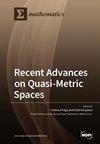Strong Convergence of Euler-Type Methods for Nonlinear Fractional Stochastic Differential Equations without Singular Kernel
IF 2.2
3区 数学
Q1 MATHEMATICS
引用次数: 0
Abstract
In this paper, we first prove the existence and uniqueness of the solution to a variable-order Caputo–Fabrizio fractional stochastic differential equation driven by a multiplicative white noise, which describes random phenomena with non-local effects and non-singular kernels. The Euler–Maruyama scheme is extended to develop the Euler–Maruyama method, and the strong convergence of the proposed method is demonstrated. The main difference between our work and the existing literature is the fact that our assumptions on the nonlinear external forces are those of one-sided Lipschitz conditions on both the drift and the nonlinear intensity of the noise as well as the proofs of the higher integrability of the solution and the approximating sequence. Finally, to validate the numerical approach, current results from the numerical implementation are presented to test the efficiency of the scheme used in order to substantiate the theoretical analysis.无奇异核的非线性分式随机微分方程欧拉型方法的强收敛性
本文首先证明了由乘法白噪声驱动的变阶卡普托-法布里齐奥分数随机微分方程解的存在性和唯一性,该方程描述了具有非局部效应和非星核的随机现象。我们对 Euler-Maruyama 方案进行了扩展,开发出了 Euler-Maruyama 方法,并证明了所提出方法的强大收敛性。我们的工作与现有文献的主要区别在于,我们对非线性外力的假设是对漂移和噪声非线性强度的单边 Lipschitz 条件,以及对解和近似序列的高积分性的证明。最后,为了验证数值方法的有效性,介绍了当前的数值实施结果,以测试所用方案的效率,从而证实理论分析的正确性。
本文章由计算机程序翻译,如有差异,请以英文原文为准。
求助全文
约1分钟内获得全文
求助全文
来源期刊

Mathematics
Mathematics-General Mathematics
CiteScore
4.00
自引率
16.70%
发文量
4032
审稿时长
21.9 days
期刊介绍:
Mathematics (ISSN 2227-7390) is an international, open access journal which provides an advanced forum for studies related to mathematical sciences. It devotes exclusively to the publication of high-quality reviews, regular research papers and short communications in all areas of pure and applied mathematics. Mathematics also publishes timely and thorough survey articles on current trends, new theoretical techniques, novel ideas and new mathematical tools in different branches of mathematics.
 求助内容:
求助内容: 应助结果提醒方式:
应助结果提醒方式:


